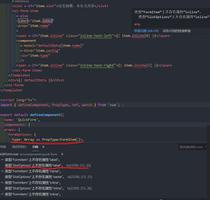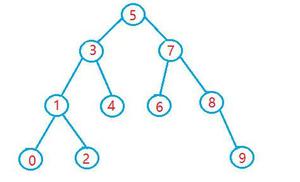vue 快速入门 系列 —— 实例方法(或 property)和静态方法

其他章节请看:
vue 快速入门 系列
实例方法(或 property)和静态方法
在 Vue(自身) 项目结构 一文中,我们研究了 vue 项目自身构建过程,也知晓了 import Vue from 'core/index' 就是引入 vue 的核心代码,该文件的前两行对应着 vue 的实例方法和静态方法(或称全局方法),本篇就和大家一起来看一下这两部分。
// vuev2.5.20/src/core/index.js// 返回 Vue 构造函数,并准备好实例方法
import Vue from './instance/index'
// 静态方法(或称全局方法)
import { initGlobalAPI } from './global-api/index'
...
Tip:vuev2.5.20 只是 vue 克隆到本地的项目名,下面将默认是这个项目。
实例方法(instance/index.js)
instance/index.js 的内容并不复杂,全部代码不到 30 行:
// src/core/instance/index.js 全部代码:import { initMixin } from './init'
import { stateMixin } from './state'
import { renderMixin } from './render'
import { eventsMixin } from './events'
import { lifecycleMixin } from './lifecycle'
import { warn } from '../util/index'
// 构造函数
function Vue (options) {
if (process.env.NODE_ENV !== 'production' &&
!(this instanceof Vue)
) {
warn('Vue is a constructor and should be called with the `new` keyword')
}
this._init(options)
}
// 初始化相关。每次调用 new Vue() 就会被执行,里面包含很多初始化操作
initMixin(Vue)
// 状态相关。数据相关更确切
stateMixin(Vue)
// 事件相关
eventsMixin(Vue)
// 生命周期相关
lifecycleMixin(Vue)
// 渲染相关
renderMixin(Vue)
export default Vue
首先定义 Vue 构造函数,接着调用initMixin()、stateMixin()等 5 个方法,给 Vue 的原型添加方法(或 property)。以下是 initMixin()、stateMixin() 的代码片段:
export function initMixin (Vue: Class<Component>) { Vue.prototype._init = function (options?: Object) {
...
}
}
export function stateMixin (Vue: Class<Component>) { ...
Object.defineProperty(Vue.prototype, '$data', dataDef)
Object.defineProperty(Vue.prototype, '$props', propsDef)
Vue.prototype.$set = set
Vue.prototype.$delete = del
Vue.prototype.$watch = function (
expOrFn: string | Function,
cb: any,
options?: Object
): Function {
...
}
}
剩余的三个方法也类似,也是给 Vue 的 prototype 增加方法。
以下是每个方法中在 Vue 的原型上定义的方法或 property:
initMixin(Vue) -
_init()stateMixin(Vue) -
$data、$props、$set()、$delete()、$watch()eventsMixin(Vue) -
$on()、$once()、$off()、$emit()lifecycleMixin(Vue) -
_update()、$forceUpdate()、$destroy()renderMixin(Vue) -
$nextTick()、_render()
接着,我们将逐一分析其中的实现。
initMixin(初始化相关)
此方法仅仅给 Vue 定义了一个原型方法,即 _init()。每次调用 new Vue() 就会被执行。
function Vue (options) { ...
this._init(options)
}
如果你看过 jQuery 的源码,里面也有一个类似的方法,是 init。
var jQuery = function( selector, context ) { // 返回jQuery对象
return new jQuery.fn.init( selector, context, rootjQuery );
}
jQuery.fn = jQuery.prototype = {
constructor: jQuery,
init: function( selector, context, rootjQuery ) {
// 很多逻辑的处理
...
}
...
}
每次执行 jQuery(jqOptions) 都会调用 new jQuery.fn.init(),里面有非常多的处理,所以我们可以给 jqOptions 传递多种不同类型的参数。
同样的,new Vue() 也支持多种参数,所以这个 _init() 里面也会做很多事情:
// 核心代码Vue.prototype._init = function (options?: Object) {
const vm: Component = this
// 合并参数
if (options && options._isComponent) {
initInternalComponent(vm, options)
} else {
vm.$options = mergeOptions(
resolveConstructorOptions(vm.constructor),
options || {},
vm
)
}
// 初始化生命周期、初始化事件...
initLifecycle(vm)
initEvents(vm)
initRender(vm)
// 触发生命钩子:beforeCreate
callHook(vm, 'beforeCreate')
// resolve injections before data/props
// 我们可以使用的顺序:inject -> data/props -> provide
initInjections(vm)
initState(vm)
initProvide(vm) // resolve provide after data/props
callHook(vm, 'created')
if (vm.$options.el) {
// 挂载
vm.$mount(vm.$options.el)
}
}
_init() 方法依次会合并参数、接着对生命周期、事件等做初始化,其中也会依次触发生命周期钩子 beforeCreate 和 created,最后根据条件进行挂载。
stateMixin(数据相关)
stateMixin(Vue) 中 给 Vue 的原型定义的方法(或 property)有:$data、$props、$set()、$delete()、$watch()。
vm.$data、vm.$props
vm.$data ,返回 Vue 实例观察的数据对象。
vm.$props,返回当前组件接收到的 props 对象。
vm.$set()、vm.$delete() 和 vm.$watch()
$set、$delete 和 $watch 都是与数据相关。出现的背景和原理分析请看 侦测数据的变化 - [vue api 原理]
eventsMixin(事件相关)
eventsMixin(Vue) 中定义的的原型方法有:$on、$once、$off、$emit。分别是注册事件,注册只触发一次的事件、解除事件、触发自定义事件。
vm.$on()
这四个方法,$on() 应该是核心,只有先注册事件,才能解绑事件,或触发事件。
用法如下:
vm.$on('test', function (msg) { console.log(msg)
})
vm.$emit('test', 'hi')
// => "hi"
以下是 $on() 的源码,核心功能就是“收集事件和对应的回调”:
Vue.prototype.$on = function (event: string | Array<string>, fn: Function): Component { const vm: Component = this
// 如果是数组,则遍历数组,依次注册
if (Array.isArray(event)) {
for (let i = 0, l = event.length; i < l; i++) {
vm.$on(event[i], fn)
}
} else {
// 将回调存入 event 对应的数组中
(vm._events[event] || (vm._events[event] = [])).push(fn)
...
}
return vm
}
vm.$once()
$once(),注册只触发一次的事件。
如果你看过 jQuery 源码(事件系统),也能猜到 $once 应该是基于 $on 来实现:
Vue.prototype.$once = function (event: string, fn: Function): Component { const vm: Component = this
// 回调的代理:先注销事件,在触发
function on () {
vm.$off(event, on)
fn.apply(vm, arguments)
}
on.fn = fn
// 在 $on 的基础上实现。给回调设置一个代理
vm.$on(event, on)
return vm
}
vm.$off()
$off(),解除事件绑定。
逻辑比较简单:支持没有传参的情况、传参是数组、解绑指定事件、解绑指定事件的回调。请看源码:
Vue.prototype.$off = function (event?: string | Array<string>, fn?: Function): Component { const vm: Component = this
// 如果没有提供参数,则移除所有的事件监听器
if (!arguments.length) {
// Object.create(null) 创建一个原型为null的空对象,以此方式来清空事件
vm._events = Object.create(null)
return vm
}
// 数组,则依次解除事件绑定
if (Array.isArray(event)) {
for (let i = 0, l = event.length; i < l; i++) {
vm.$off(event[i], fn)
}
return vm
}
// specific event
// 解绑指定的事件
const cbs = vm._events[event]
// 没有回调,直接返回
if (!cbs) {
return vm
}
// 未指定要解绑的事件的回调,则直接清空该事件的所有回调
if (!fn) {
vm._events[event] = null
return vm
}
// 解绑事件指定的回调
let cb
let i = cbs.length
while (i--) {
cb = cbs[i]
if (cb === fn || cb.fn === fn) {
cbs.splice(i, 1)
break
}
}
return vm
}
vm.$emit()
$emit(),触发当前实例上的事件。
取得回调数组,依次触发回调。请看源码:
Vue.prototype.$emit = function (event: string): Component { const vm: Component = this
...
// 取得回调数组
let cbs = vm._events[event]
if (cbs) {
cbs = cbs.length > 1 ? toArray(cbs) : cbs
const args = toArray(arguments, 1)
const info = `event handler for "${event}"`
// 依次调用回调
for (let i = 0, l = cbs.length; i < l; i++) {
// 此方法真正调用回调,里面包含一些错误处理
invokeWithErrorHandling(cbs[i], vm, args, vm, info)
}
}
return vm
}
lifecycleMixin(生命周期相关)
lifecycleMixin(Vue) 中给 Vue 定义的原型方法有:_update()、$forceUpdate()、$destroy()。
vm.$forceUpdate()
迫使 Vue 实例重新渲染。注意它仅仅影响实例本身和插入插槽内容的子组件,而不是所有子组件。
代码出奇的少:
// $forceUpdate() 的全部代码Vue.prototype.$forceUpdate = function () {
const vm: Component = this
if (vm._watcher) {
vm._watcher.update()
}
}
关键应该就是 vm._watcher.update()
通过全局搜索,发现 vm._watcher 赋值是在 watcher.js 的构造函数中(行{1}):
// src/core/observer/watcher.jsexport default class Watcher {
vm: Component;
...
constructor (
vm: Component,
expOrFn: string | Function,
cb: Function,
options?: ?Object,
isRenderWatcher?: boolean
) {
this.vm = vm
if (isRenderWatcher) {
vm._watcher = this // {1}
}
于是我们知道 vm 的 _watcher 是一个 Watcher。而根据 侦测数据的变化 - [基本实现] 中对 Watcher 的研究,我们写过这样一段代码:
class Watcher{ ...
// 数据改变时收到通知,然后再通知到外界
update(newVal, oldVal){
this.callback(newVal, oldVal)
}
}
调用 update(),会通知到外界。这里的外界或许就是 vm,然后 vm 会做一些事情,其中或许就包含重新渲染。
vm.$destroy()
$destroy(),完全销毁一个实例。清理它与其它实例的连接,解绑它的全部指令及事件监听器。请看源码:
Vue.prototype.$destroy = function () { const vm: Component = this
// 防止重复调用
if (vm._isBeingDestroyed) {
return
}
// 触发钩子:beforeDestroy
callHook(vm, 'beforeDestroy')
vm._isBeingDestroyed = true
// remove self from parent
// 从父元素中删除自己
const parent = vm.$parent
// 有父元素 & 父元素没有开始被删除 & 不是抽象的?
if (parent && !parent._isBeingDestroyed && !vm.$options.abstract) {
remove(parent.$children, vm)
}
// teardown watchers
if (vm._watcher) {
// teardown,取消观察。也就是从所有依赖(Dep)中把自己删除
vm._watcher.teardown()
}
// 解绑用户通过 vm.$watch 添加的监听。
let i = vm._watchers.length
while (i--) {
vm._watchers[i].teardown()
}
// remove reference from data ob
// frozen object may not have observer.
if (vm._data.__ob__) {
vm._data.__ob__.vmCount--
}
// call the last hook...
// vm 已被销毁
vm._isDestroyed = true
// invoke destroy hooks on current rendered tree
// 在当前渲染的树上调用销毁钩子
vm.__patch__(vm._vnode, null)
// 调用钩子:destroyed
callHook(vm, 'destroyed')
// 解绑所有事件
vm.$off()
// remove __vue__ reference
if (vm.$el) {
vm.$el.__vue__ = null
}
// release circular reference (#6759)
// 释放循环引用 (#6759)
if (vm.$vnode) {
vm.$vnode.parent = null
}
}
Tip:vm._watchers 是在 Watcher 的构造函数中添加元素的,而在 vm.$watch 方法中就有 new Watcher(),所以推测 vm._watchers 中的内容来自 vm.$watch。
export default class Watcher { vm: Component;
...
constructor (
vm: Component,
expOrFn: string | Function,
cb: Function,
options?: ?Object,
isRenderWatcher?: boolean
) {
this.vm = vm
if (isRenderWatcher) {
vm._watcher = this
}
vm._watchers.push(this)
...
}
}
Vue.prototype.$watch = function ( expOrFn: string | Function,
cb: any,
options?: Object
): Function {
const vm: Component = this
...
const watcher = new Watcher(vm, expOrFn, cb, options)
...
}
renderMixin(渲染相关)
renderMixin(Vue) 中给 Vue 定义的原型方法有:$nextTick()、_render()。
vm.$nextTick()
$nextTick(),将回调延迟到下次 DOM 更新循环之后执行
例如:
new Vue({ // ...
methods: {
// ...
example: function () {
// 修改数据
this.message = 'changed'
// DOM 还没有更新
this.$nextTick(function () {
// DOM 现在更新了
// `this` 绑定到当前实例
this.doSomethingElse()
})
}
}
})
根据用法我们可以猜测 $nextTick() 会将我们我们的回调先保存起来,然后再合适的时间再触发。请看源码:
Vue.prototype.$nextTick = function (fn: Function) { return nextTick(fn, this)
}
代码应该在 nextTick() 中:
// next-tick.jsexport function nextTick (cb?: Function, ctx?: Object) {
let _resolve
// 将回调方法封装到一个匿名函数,然后再存入 callbacks 数组中
callbacks.push(() => {
if (cb) {
try {
cb.call(ctx)
} catch (e) {
handleError(e, ctx, 'nextTick')
}
} else if (_resolve) {
_resolve(ctx)
}
})
//感觉这里有秘密 {1}
if (!pending) {
pending = true
timerFunc()
}
...
}
nextTick() 中,首先将我们的回调保存起来,将回调方法封装到一个匿名函数,然后再存入 callbacks 数组中。
什么时候触发回调?感觉行{1}处有秘密。事实证明我猜对了,请看源码:
// next-tick.js 中相关代码如下:// 存放回调函数
const callbacks = []
let pending = false
// 依次执行回调函数
function flushCallbacks () {
pending = false
// 备份数组 callbacks。
// 防止遍历回调时,对 callbacks 修改
const copies = callbacks.slice(0)
// 清空数组 callbacks
callbacks.length = 0
// 依次执行回调
for (let i = 0; i < copies.length; i++) {
copies[i]()
}
}
// 这里我们有使用微任务的异步延迟包装器。
let timerFunc
if (typeof Promise !== 'undefined' && isNative(Promise)) {
const p = Promise.resolve()
timerFunc = () => {
p.then(flushCallbacks)
// ios 兼容处理 Promise
if (isIOS) setTimeout(noop)
}
isUsingMicroTask = true
} else if (!isIE && typeof MutationObserver !== 'undefined' && (
isNative(MutationObserver) ||
// PhantomJS and iOS 7.x
MutationObserver.toString() === '[object MutationObserverConstructor]'
)) {
// MutationObserver 也是微任务
let counter = 1
const observer = new MutationObserver(flushCallbacks)
const textNode = document.createTextNode(String(counter))
observer.observe(textNode, {
characterData: true
})
timerFunc = () => {
counter = (counter + 1) % 2
textNode.data = String(counter)
}
isUsingMicroTask = true
// window.setImmediate,该特性是非标准的,请尽量不要在生产环境中使用它!
// ie支持, 作用类似于 setTimeout(fn, 0)
} else if (typeof setImmediate !== 'undefined' && isNative(setImmediate)) {
timerFunc = () => {
setImmediate(flushCallbacks)
}
} else {
// 回退到 setTimeout。
timerFunc = () => {
setTimeout(flushCallbacks, 0)
}
}
timerFunc 是一个函数,会根据条件选择不同的异步方法封装。这里有4种异步方法,Promise.then 和 MutationObserver 是微任务,后两种(setImmediate 和 setTimeout)是宏任务。
已第一种为例:
timerFunc = () => { p.then(flushCallbacks)
// ios 兼容处理 Promise
if (isIOS) setTimeout(noop)
}
当我们执行 timerFunc() 时,就会立刻执行 p.then(flushCallbacks),flushCallbacks() 方法会依次执行回调函数,但 flushCallbacks() 方法只会在合适的时间被触发(即事件循环中)。
最后我们总结下:执行 this.$nextTick(fn) ,将进入 nextTick(),首先将我们的回调函数用匿名函数封装起来,在将这个匿名函数扔在 callbacks 中,因为没有代办事项(let pending = false),于是执行 timerFunc()。
Tip: 有关事件循环、微任务和宏任务的介绍可以看这里
静态方法(global-api/index.js)
global-api/index.js 文件代码总共约 70 行,除去通过 import 导入的 20 行,剩余的都在 initGlobalAPI() 方法中:
export function initGlobalAPI (Vue: GlobalAPI) { // config
const configDef = {}
configDef.get = () => config
...
Object.defineProperty(Vue, 'config', configDef)
// 暴露的 util 方法。注意:这些不被视为公共 API 的一部分 - 避免依赖
Vue.util = {
...
}
// vm.$set 是 Vue.set 的别名。
// delete 和 nextTick 类似
Vue.set = set
Vue.delete = del
Vue.nextTick = nextTick
// 2.6 explicit observable API
// 让一个对象可响应
Vue.observable = <T>(obj: T): T => {
observe(obj)
return obj
}
Vue.options = Object.create(null)
// ASSET_TYPES = [ 'component', 'directive', 'filter' ]
ASSET_TYPES.forEach(type => {
Vue.options[type + 's'] = Object.create(null)
})
// this is used to identify the "base" constructor to extend all plain-object
// components with in Weex's multi-instance scenarios.
Vue.options._base = Vue
extend(Vue.options.components, builtInComponents)
// 定义了一个方法:Vue.use
initUse(Vue)
// 定义了一个方法:Vue.mixin()
initMixin(Vue)
// 初始化继承。定义了一个方法:Vue.extned()
initExtend(Vue)
// 初始化资产注册。定义了三个方法:Vue.component()、Vue.directive()和Vue.filter()
initAssetRegisters(Vue)
}
接着我们就源码的顺序依次分析。
Vue.set()、Vue.delete()和Vue.nextTick()
Vue.set() 是 vm.$set() 的别名
Vue.delete() 是 vm.$delete 的别名
Vue.nextTick() 是 vm.$nextTick() 的别名
Vue.observable()
代码很少:
Vue.observable = <T>(obj: T): T => { observe(obj)
return obj
}
直接看官网介绍:
用法:让一个对象可响应。Vue 内部会用它来处理 data 函数返回的对象。
返回的对象可以直接用于渲染函数和计算属性内,并且会在发生变更时触发相应的更新。也可以作为最小化的跨组件状态存储器,用于简单的场景:
const state = Vue.observable({ count: 0 })const Demo = {
render(h) {
return h('button', {
on: { click: () => { state.count++ }}
}, `count is: ${state.count}`)
}
}
initUse
// src/core/global-api/use.jsexport function initUse (Vue: GlobalAPI) {
Vue.use = function (plugin: Function | Object) {
// 按照了的插件
const installedPlugins = (this._installedPlugins || (this._installedPlugins = []))
// 如果已经安装了此插件,就直接返回 Vue
if (installedPlugins.indexOf(plugin) > -1) {
return this
}
// additional parameters
// 附加参数
const args = toArray(arguments, 1)
// this 插入第一位
args.unshift(this)
// 插件的 install 属性 如果是函数,则执行 install
if (typeof plugin.install === 'function') {
plugin.install.apply(plugin, args)
// 如果 plugin 本身是函数,就执行 plugin
} else if (typeof plugin === 'function') {
plugin.apply(null, args)
}
// 将该插件放入已安装的插件列表中
installedPlugins.push(plugin)
return this
}
}
Vue.use()
initUse(Vue) 中只定义了 Vue.use() 这个全局方法。根据前面的源码分析,此方法的作用应该是安装插件。我们查阅 api 确认一下。
用法:安装 Vue.js 插件。如果插件是一个对象,必须提供 install 方法。如果插件是一个函数,它会被作为 install 方法。install 方法调用时,会将 Vue 作为参数传入。
Tip:到底什么是插件?官网:插件通常用来为 Vue 添加全局功能。插件的功能范围没有严格的限制——一般有下面几种:
- 添加全局方法或者 property。如:vue-custom-element
- 添加全局资源:指令/过滤器/过渡等。如 vue-touch
- 通过全局混入来添加一些组件选项。如 vue-router
- 添加 Vue 实例方法,通过把它们添加到 Vue.prototype 上实现。
- 一个库,提供自己的 API,同时提供上面提到的一个或多个功能。如 vue-router
这样说来,插件的用处挺大的。
Tip:与 jQuery 有些类似,jQuery 也提供了方法(如 jQuery.extend = jQuery.fn.extend = function() {})来扩展核心功能。
initMixin
export function initMixin (Vue: GlobalAPI) { Vue.mixin = function (mixin: Object) {
this.options = mergeOptions(this.options, mixin)
return this
}
}
Vue.mixin()
initMixin(Vue) 中只定义了一个全局方法 Vue.mixin。
mixin 有点类似 Object.assign 的味道。我们看一下官网的介绍:
用法:全局注册一个混入,影响注册之后所有创建的每个 Vue 实例。不推荐在应用代码中使用。
我们在看一下它的用法(来自官网):
// 为自定义的选项 'myOption' 注入一个处理器。Vue.mixin({
created: function () {
var myOption = this.$options.myOption
if (myOption) {
console.log(myOption)
}
}
})
new Vue({
myOption: 'hello!'
})
// => "hello!"
根据用法和源码,我们能推测出,Vue.mixin 就是将我们的参数合并到 Vue(this.options) 中,后续创建 Vue 实例时这些参数就会有体现。
initExtend
Vue.extend()
initExtend(Vue) 中只定义了 Vue.extend() 这个全局方法。
extend 这个方法名,又让我想起 Object.assign、jQuery.extend。让我们先看一下 api 如何介绍:
用法:使用基础 Vue 构造器,创建一个“子类”。参数是一个包含组件选项的对象。
好像猜错了。根据用法介绍,Vue.extend 的作用更像 es6 中 Class 的 extends。直接分析其源码再次验证我们的猜测:
Vue.extend = function (extendOptions: Object): Function { extendOptions = extendOptions || {}
// Super 指向 Vue
const Super = this
const SuperId = Super.cid
// 缓存相关 {1}
const cachedCtors = extendOptions._Ctor || (extendOptions._Ctor = {})
if (cachedCtors[SuperId]) {
return cachedCtors[SuperId]
}
const name = extendOptions.name || Super.options.name
...
// 定义一个子类 Sub
const Sub = function VueComponent (options) {
this._init(options)
}
// 以 Vue 的原型作为新建对象的原型,并将新建对象设置为 Sub 的原型
// 用 new Sub() 创建的对象也能访问到 Vue.prototype 中的方法或属性
Sub.prototype = Object.create(Super.prototype)
Sub.prototype.constructor = Sub
Sub.cid = cid++
// 合并参数
Sub.options = mergeOptions(
Super.options,
extendOptions
)
// 新增 super 属性,指向 Vue
Sub['super'] = Super
if (Sub.options.props) {
initProps(Sub)
}
if (Sub.options.computed) {
initComputed(Sub)
}
// 允许进一步的扩展/混合/插件使用
Sub.extend = Super.extend
Sub.mixin = Super.mixin
Sub.use = Super.use
...
// 在扩展时保留对超级选项的引用。
Sub.superOptions = Super.options
Sub.extendOptions = extendOptions
Sub.sealedOptions = extend({}, Sub.options)
// 缓存构造函数
cachedCtors[SuperId] = Sub
// 返回子类 Sub
return Sub
}
执行 Vue.extend() 将返回一个子类 Sub,该子类继承了父级(Vue)。为了提高性能,里面增加了缓存机制(行{1})。
initAssetRegisters
initAssetRegisters(Vue) 中定义了三个全局方法。
export function initAssetRegisters (Vue: GlobalAPI) { /**
* Create asset registration methods.
* 创建资产注册方法。
*/
ASSET_TYPES.forEach(type => {
Vue[type] = function (
id: string,
definition: Function | Object
): Function | Object | void {
...
}
})
}
ASSET_TYPES 是一个数组:
export const ASSET_TYPES = [ 'component',
'directive',
'filter'
]
Tip:如果你看过 jQuery,你也会发现有类似的写法,也就是当多个方法的逻辑相似,就可以写在一起,显得精简。
Vue.component()、Vue.directive()和Vue.filter()
直接看源码有点难懂(注释可稍后再看):
ASSET_TYPES.forEach(type => { Vue[type] = function (
id: string,
definition: Function | Object
): Function | Object | void {
// 没有传第二个参数,表示获取。比如获取指令
if (!definition) {
return this.options[type + 's'][id]
} else {
// 组件的特别处理
if (type === 'component' && isPlainObject(definition)) {
definition.name = definition.name || id
definition = this.options._base.extend(definition)
}
// 指令的特殊处理
if (type === 'directive' && typeof definition === 'function') {
definition = { bind: definition, update: definition }
}
// 与获取对应,这里应该就是注册。例如注册指令、组件或过滤器
this.options[type + 's'][id] = definition
return definition
}
}
})
我们翻阅一下对应 api:
- Vue.filter( id, [definition] ) - 注册或获取全局过滤器。
// 注册Vue.filter('my-filter', function (value) {
// 返回处理后的值
})
// getter,返回已注册的过滤器
var myFilter = Vue.filter('my-filter')
Vue.directive() - 注册或获取全局指令。
Vue.component() - 注册或获取全局组件
核心就是注册或获取。感觉作用比较简单,有点类似注册事件,取得事件的回调。现在我们在来看一下源码和相应的注释,会发现容易理解多了。
Tip:组件、指令、过滤器当然不是回调这么简单,所以我们可以猜测:这里只是负责注册和获取,至于如何生效,却不在此处。
分布它处的方法
vm.$mount()
如果 Vue 实例在实例化时没有收到 el 选项,则它处于“未挂载”状态,没有关联的 DOM 元素。可以使用 vm.$mount() 手动地挂载一个未挂载的实例。
项目中搜索 $mount ,发现有三个文件对其有定义 Vue.prototype.$mount =:
platforms\web\runtime\index.js
platforms\weex\runtime\index.js
platforms\web\entry-runtime-with-compiler.js
前两个文件是根据不同的平台(web或weex)对 $mount 方法的不同的定义。
而最后一个文件有些意思,请看源码:
// entry-runtime-with-compiler.js// 函数劫持。保存原始 $mount
const mount = Vue.prototype.$mount // {1}
// 对原始 $mount 进行封装。主要做的工作是将模板编译成渲染函数
Vue.prototype.$mount = function ( // {2}
el?: string | Element,
hydrating?: boolean
): Component {
el = el && query(el)
...
const options = this.$options
// resolve template/el and convert to render function
// 解析模板/el并转换为渲染函数
if (!options.render) {
...
}
return mount.call(this, el, hydrating)
}
在 Vue(自身) 项目结构 一文中,我们知道 entry-runtime-with-compiler.js 生成的文件是完整版本(dist/vue.js),完整版本是包含编译器的,而我们在 模板 一文中也知晓了编译器的主要作用,将模板编译成渲染函数。
所以我们能推测出这个 $mount(行{2}),就是在原始 $mount(行{1})中增加编译器的功能。
其他章节请看:
vue 快速入门 系列
以上是 vue 快速入门 系列 —— 实例方法(或 property)和静态方法 的全部内容, 来源链接: utcz.com/z/378414.html






